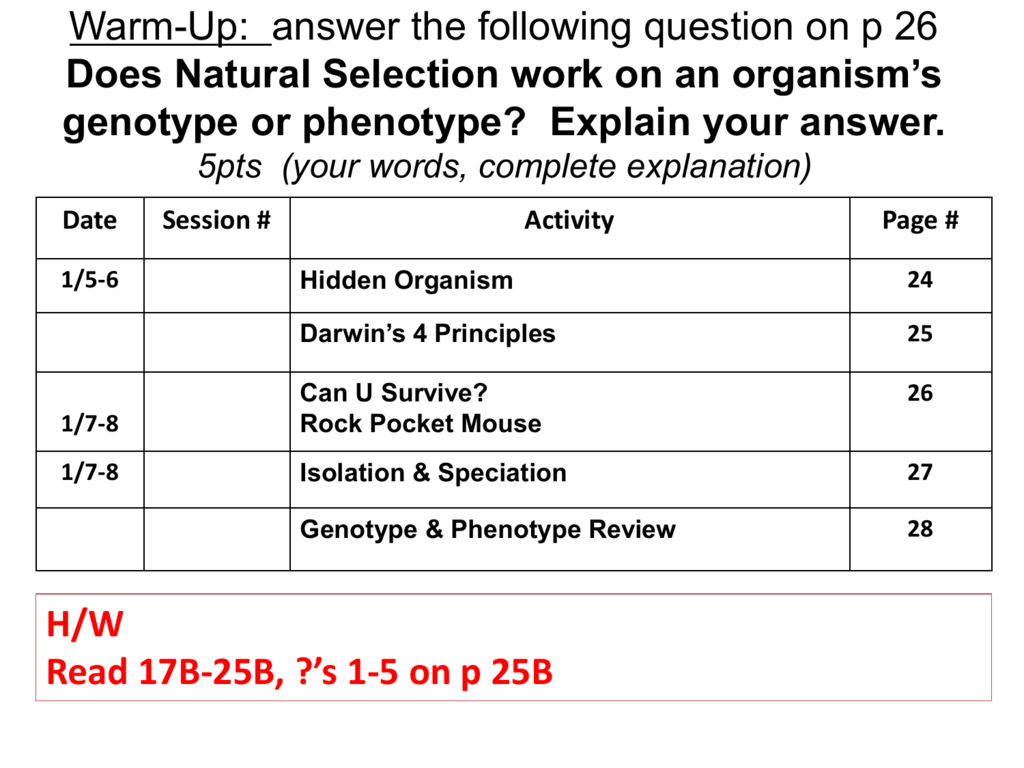
- Natural selection and the rock pocket mouse answers Patch#
- Natural selection and the rock pocket mouse answers series#
After the lava flows, they had to move to a different area with a light-colored area. The original rocks were lighter, so the lighter-colored mice lived successfully there.

Questions & Answers (1) Reviews 0 out of 5 View Product Videos Mouse over. Once you have completed the video, answer the questions in the space provided in a complete sentence.ġ. Xtreme, lightweight polymeric Primer Pocket & Flash Hole Tumbling Media. Play the video (the video is copyrighted and may not be edited) and listen for the following words- natural selection, genes, adaptations, and mutations among a population of Rock Pocket Mice. What does it mean to adapt or to mutate? Which is better for an organism to do - adapt or to mutate? How is natural selection related to these words? As you begin this lesson, keep those words in mind, and let's look at what happened to the Pocket Mouse population in the Valley of Fire in New Mexico (about 10.5 minutes). Part 1 Adaptations, Mutations, and Natural Selection This video introduces natural selection and the three key ingredients through which it effects change over time: the trait must vary in the population, it must be heritable, and individuals with a certain variation must have a reproductive advantage over those that do not. I am learning how organisms need to adapt to changing environments.


I am learning to differentiate between an adaptation and a mutation and the role each one plays in the survival of an organism.
Natural selection and the rock pocket mouse answers Patch#
These mice live on a recently discovered patch of dark-colored volcanic rock. An answer key along with a rubric for grading purposes is found in the Instructor Notes. Suppose you are studying a new population of rock pocket mice in Arizona.
Natural selection and the rock pocket mouse answers series#
It uses a series of videos, games, and simulations for each student to complete. It is intended to be used for advanced 7th graders or as a review activity for 8th graders for the 8th grade Virginia SOL test. Let's start by watching a video developed by HHMI Biointeractive about this phenomenon.This lesson is designed to be used as a review tool for adaptations, mutations, and natural selection. In orer to investigate this mystery, we're going to investigate this case of pocket mice evolution using computational models. Researchers noticed that rock pocket mice with a dark fur coat were more common on the dark lava flows, whereas the mice with light colored fur coat were more common on the light-colored sand.

There are number of variations in the population which arise due to mutations. Ancestral pocket mice had light-colored fur coats that blended in with the rocks and sandy soil that was prevalent in the region. Best suited organism is selected by nature in natural selection. The American Southwest is a fantastic place to study rock pocket mice with different fur coat colors.


 0 kommentar(er)
0 kommentar(er)
